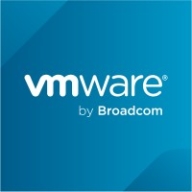

Kemp LoadMaster and VMWare Avi Load Balancer are prominent in the load balancing market. Kemp LoadMaster appears to have an advantage due to its competitive pricing and strong customer support, while VMWare Avi Load Balancer is preferred for its advanced features and analytics capabilities.
Features: Kemp LoadMaster is known for its intuitive configuration templates, reverse proxy capabilities, and comprehensive integration with Microsoft applications like Exchange and SharePoint. It also integrates seamlessly with Azure, enhancing cloud connectivity. VMWare Avi Load Balancer is recognized for its advanced visibility and analytics across various cloud environments. It offers a robust web application firewall and a flexible deployment that appeals to cloud-native needs.
Room for Improvement: Kemp LoadMaster users seek enhancements in its UI and documentation to simplify complex configurations, along with expanded security options. Meanwhile, VMWare Avi Load Balancer could improve its integration with other VMware products and provide more detailed documentation. Enhancing network analytics and strengthening security features are also recommended.
Ease of Deployment and Customer Service: Kemp LoadMaster is mainly deployed on-premises and is renowned for its easy setup and excellent customer service, making it ideal for those seeking reliable solutions with minimal fuss. VMWare Avi Load Balancer supports multiple deployment environments including hybrid and public clouds. It provides flexible infrastructure but would benefit from improved compatibility across different environments.
Pricing and ROI: Kemp LoadMaster offers flexible and cost-effective licensing options, supporting strong ROI and value for money. The pricing is appreciated for its affordability and positive financial return. VMWare Avi Load Balancer offers competitive pricing with flexible licensing, though some features may incur additional costs. Its pricing model is suitable for diverse deployment scenarios, offering considerable value for multi-site implementations.
We have not received technical support from Kemp LoadMaster without a license.
Kemp LoadMaster is a scalable solution.
With the license purchase afterwards, if it expires, it begins dropping the HTTP traffic, also the DNS traffic.
After that, they said if it was good, we could purchase the license, and while we found it very good, the license cost was too high.
We had some issues in patching management, so we deployed this product for virtual patching, the IPS rule, and it gives us very good results because we have very critical servers.
| Product | Market Share (%) |
|---|---|
| Kemp LoadMaster | 7.1% |
| VMWare Avi Load Balancer | 5.9% |
| Other | 87.0% |


| Company Size | Count |
|---|---|
| Small Business | 24 |
| Midsize Enterprise | 13 |
| Large Enterprise | 16 |
| Company Size | Count |
|---|---|
| Small Business | 2 |
| Midsize Enterprise | 2 |
| Large Enterprise | 4 |
Kemp LoadMaster is a powerful load balancing solution that also serves as a web application firewall. Its primary use case is load balancing and application load balancing, making it an ideal solution for organizations that must distribute traffic across multiple servers. Kemp's integration with an active directory for ESP usage, hosting/deployment of SSL certificates, and pricing are some of its most valuable features.
Using Kemp has helped organizations mitigate cross-scripting vulnerabilities, cookie-related issues, and content security policy issues. It has also allowed them to handle everything with Kemp instead of working on each application individually.
Avi Networks Software Load Balancer is an application delivery controller (ADC) platform. The solution provides scalable application delivery across any infrastructure and allows your organization to deliver multi-cloud application services, such as load balancing, autoscaling, application security, container networking, and web application firewall. It is designed with 100% software load balancing to ensure a fast and secure application experience. Additionally, Avi Networks Software Load Balancer offers elasticity and delivers intelligence across any environment.
The Avi Networks Software Load Balancer is unique because
Avi Networks Software Load Balancer Product Highlights
Avi Networks Software Load Balancer Features
Avi Networks Software Load Balancer has many valuable key features. Some of the most useful ones include:
Avi Networks Software Load Balancer Benefits
There are many benefits to implementing Avi Networks Software Load Balancer. Some of the biggest advantages the solution offers include:
We monitor all Application Delivery Controllers (ADC) reviews to prevent fraudulent reviews and keep review quality high. We do not post reviews by company employees or direct competitors. We validate each review for authenticity via cross-reference with LinkedIn, and personal follow-up with the reviewer when necessary.